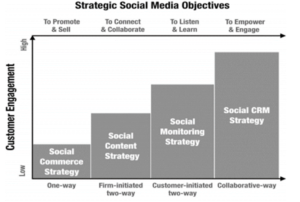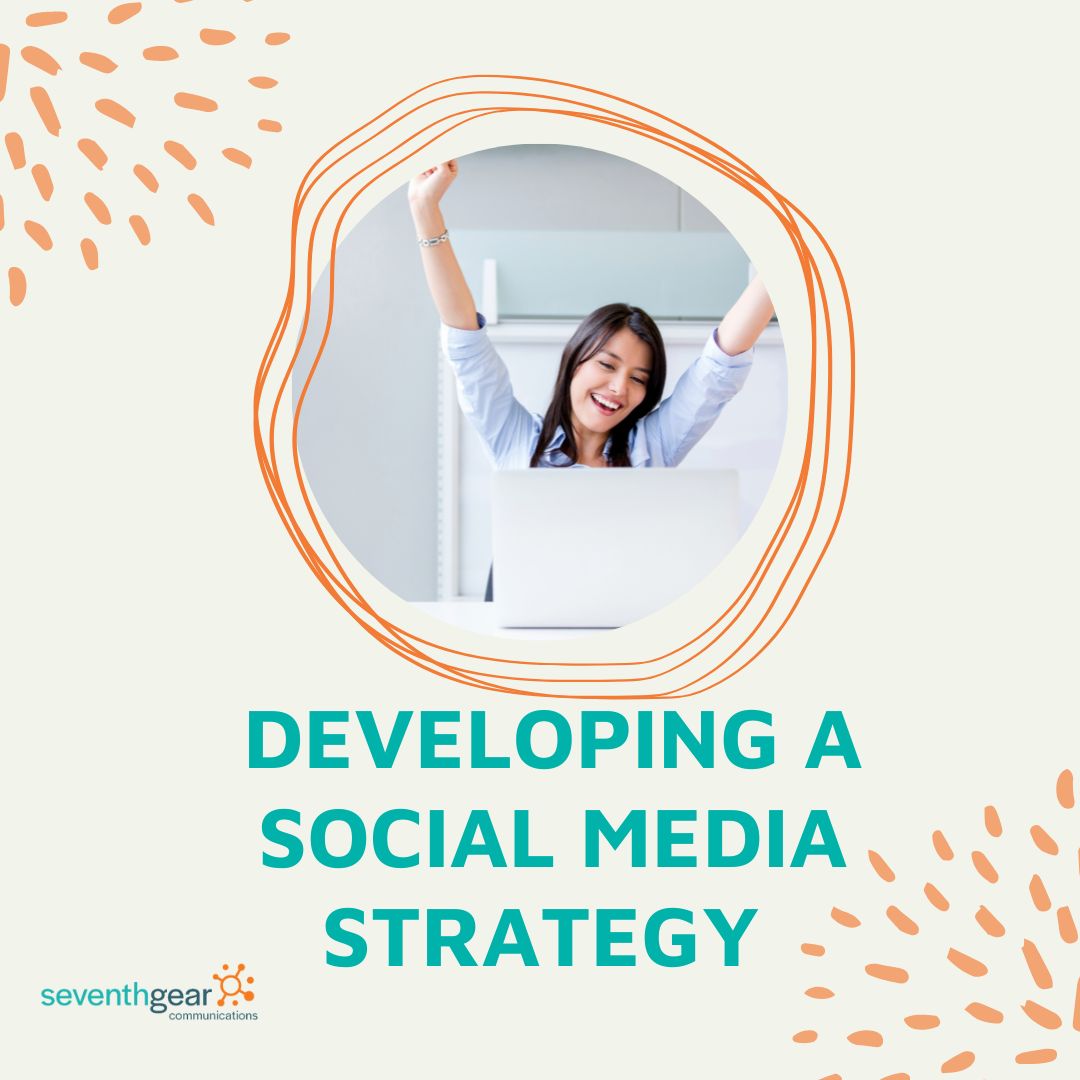Once you understand your audience and what type of content they want to engage with, you can begin to develop a social strategy. To do this, you must understand where social media lies on the buyer’s journey.
The Buyer’s Journey
Social media is typically at the beginning of the buyer’s journey. It has the biggest role when it comes to creating awareness and initial interest. Eventually, and ideally, your content will lead them to the consideration stage. As shown in the graphic below, social media plays a major part in the first half of this journey.
It’s not social’s job necessarily to bring in leads; instead, it’s to create the awareness and credibility of your brand. From there, you can begin to make those conversions.
The content on your website, the info in your e-newsletter, the people they’ll be working with, and the whole experience is what’s at the end of this buyer journey. Social media can be a very effective gateway to all of this. It’s a lead generation tool, not a conversion tool.

Social Strategies
According to a study published by the Journal of the Academy of Marketing Science, there are four basic social media strategies. These strategies are distinguished by the interactions with your audience, starting from one-way communication (similar to traditional advertising) to two-way communication, either initiated by your business or a follower. This is the ultimate goal of collaborative, back-and-forth communication where social media really acts as a true online persona for your business.
The Four Social Media Strategies
1) Social commerce strategy: One-way communication, transactional, little to no interaction
2) Social content strategy: Utilizes content marketing, firm-initiated two-way communication, can incorporate user-generated content
3) Social monitoring strategy: Actively seeking out conversations, part of a larger customer service and/or lead generation strategy, two-way communication
4) Social Customer Relationship Management (CRM) strategy: Utilizes tech tools to segment social media followers, involves customers in value creation, mutually beneficial

https://link.springer.com/content/pdf/10.1007/s11747-020-00733-3.pdf
The study referenced above also suggests integrating your social media plans with your overall marketing strategy to create a social media marketing strategy.
There are eight components to a successful social media marketing strategy.
Client/Buyer Profiles
Define your target segments and determine what the demographics look like. This will also help you identify where on social you need to be, whether it’s LinkedIn, Snapchat, or anywhere in between.
Social Media Audit
This is a deep dive analysis into your current platforms and where you are online – on the traditional social media profiles but also the other third party sites where your company has a public profile, like Glassdoor, Yelp, or Next Door, for example. Find your profile, claim it, update it, and monitor it. Also look at what your top two or three competitors are doing and compare the content side by side. Take note of what’s working and what’s not, then consider how you can adapt for your audience.
Mission statements
Write a mission statement for each network where you have a presence. This will help define the who/what/how/why and will dictate what you share to that platform. This exercise is critical to help you understand the different uses of the different networks. You shouldn’t be posting the same thing to every network
Define goals, metrics, and key performance indicators
Review your goals and key performance indicators (KPIs). A KPI is something measurable like the number of visits to your website in a month. (More about KPIs below)
- Content strategy
- The content strategy considers what kind of content is appealing to your buyer profiles depending on the network it’s appearing on. What are you publishing (and how often)? How are you saying it? What visuals are you using? How is your message tailored to the platform?
- Organic v. paid
- Look at organic versus paid content. The truth is that you can’t really have a well-rounded social presence anymore without some sort of paid media. Especially on Facebook where the algorithms make it difficult to push through otherwise.
- Automation and process
- Consider how you can streamline and simplify the process of developing content, publishing it, monitoring it, and engaging with your audience. This can be achieved through a social media management platform where you can manage most of your content from one place.
- Continuous experimentation
- Social media is about experimenting in real-time with new ideas. Always finetune it and be ready and willing to adapt and pivot if something isn’t working.
Social Media KPIs
There are generally three categories used for calculating the success of your social media strategy: awareness metrics, engagement metrics, and conversion metrics.
 I recommend choosing a couple metrics from each category based on your needs and goals. Take note of your initial benchmark and compare the numbers each week or month. This is how you’ll measure the progress of your social strategy. My advice is to avoid using follower numbers as a metric for success or comparison. You’ll want to keep track of the engagement, the conversions, the time on site, and the bounce rate. These numbers will tell you far more about your social performance than your number of followers.
I recommend choosing a couple metrics from each category based on your needs and goals. Take note of your initial benchmark and compare the numbers each week or month. This is how you’ll measure the progress of your social strategy. My advice is to avoid using follower numbers as a metric for success or comparison. You’ll want to keep track of the engagement, the conversions, the time on site, and the bounce rate. These numbers will tell you far more about your social performance than your number of followers.
Develop a Social Media Policy
It would be in your company’s best interest to develop a social media policy and style guide that sets clear guidelines for use and publishing. I suggest consulting with a legal advisor and collaborating with HR before finalizing anything. Such a policy will help people understand what’s permissible and is a good way to ensure the brand is in good hands in social.
Social’s Role in Crisis Communication
Finally, consider a crisis communications plan and its role in social media. A crisis could be anything from a tragic event happening in your community to something that involves your employees or your company. Think about the process of events that need to happen. What are the guidelines for who responds? Perhaps you’ll want to consider turning off public commenting on your pages or releasing a statement across your social channels. I would include a section on crisis communication in your social media policy. It’s better to know what needs to happen if and when you need to take action.
If you’re looking to develop a social media strategy tailored for your business and not sure where to start, contact us.
Comments are closed.

